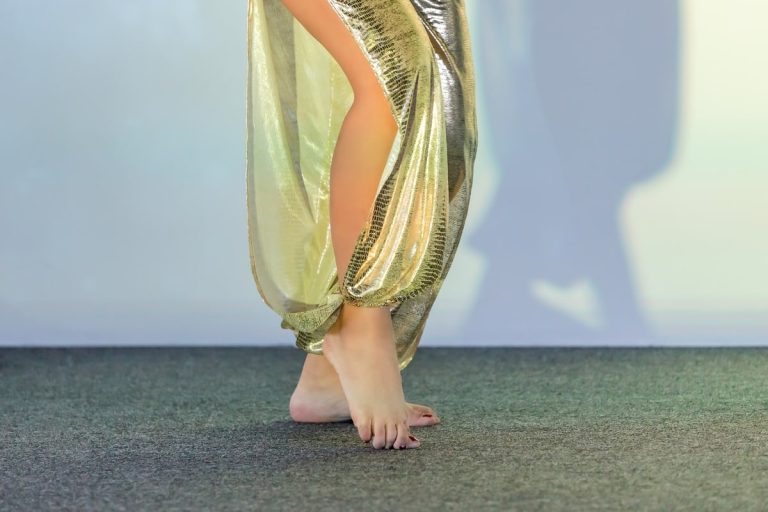Dance is a universal language that cuts beyond all barriers and civilizations. This type of self-expression, narrative, and entertainment enthralls global audiences. No matter the kind of dance—ballet, salsa, hip-hop, or tango—it takes not just talent and dedication but also the proper tools, and one of the most essential parts of a dancer’s outfit is their footwear. A dancer’s Performance can be significantly impacted by wearing the right shoes, which are more than just a fashion statement. This article will discuss the significance of wearing the right shoes for a faultless dancing performance.
The distinction between dance shoes
There are more practical reasons to dance in the proper shoes than looks. The three main goals are functional, safety, and improving the dance experience. Appropriate dance shoes are made for particular dancing forms to offer the support, comfort, and grip required. Dance shoes, as opposed to everyday footwear, are explicitly designed to meet the demands of various dance styles, enabling dancers to move with grace and accuracy.
Comfort and support
Dancers’ feet might experience extreme fatigue while performing complicated routines that require deft footing and fast motions. Proper dance shoes for the arches, heels, and toes provide the optimum support, lowering the possibility of injuries and maximizing comfort. Dancers may perform quickly and confidently because of the padding and cushioning in their shoes, which absorb shock and impact.
Correct Fit
Shoes that don’t fit properly can be a dancer’s greatest nightmare. While shoes that are too tight can result in blisters, corns, and calluses, shoes that are too loose can cause stumbles, slides, and twisted ankles. The correctly fitted dance shoes have a snug fit that offers stability without impeding mobility. Dancers may concentrate on their Performance without being concerned that their shoes would come off or hurt them.
Improving Performance
Coordination and exact movement are critical components of dance. The appropriate pair of dancing shoes can significantly improve their Performance by enabling dancers to execute routines more accurately. Different dance forms call for particular footwear. Ballet dancers, for example, need shoes with flexible soles to stand on their toes, while tap dancers need shoes with metal plates to make rhythmic noises. Dancers may perform flawlessly and captivatingly by maintaining balance, control, and rhythm with proper footwear.
Safety First
Dancers should always put their safety first. Spins, lifts, slides, and other diverse motions are all part of dancing. The likelihood of slipping or falling dramatically increases without adequate footwear. Dance shoes are made of materials that offer the best traction on various dance floors, lowering the risk of mishaps. It is especially crucial for dance forms like salsa or ballroom, where sophisticated footwork and partner interactions call for stability and traction.
Maintaining Dance Floors
Not only are proper dance shoes advantageous to the dancer, but they also help keep dance floors in good condition. Regular street shoes can scuff, scratch, and even harm sensitive dance floorings like Marley or oak floors. Dance shoes are made with specialized soles that reduce the impact on dance floors, keeping the space in good shape for upcoming performances.
Selecting the Proper Dance Shoes
The dance style and personal tastes must be carefully considered when choosing the appropriate shoes.
Here are some pointers to assist dancers in selecting the ideal couple:
- Recognize Your Dance Style: Different shoes for various dancing forms are needed. Look for shoes made for your chosen style by researching the specifications.
- Consult with experts: The most excellent shoe options for your needs can be learned from dancing instructors and seasoned dancers. They can help you make the best decision because they know how important wearing the perfect shoes is.
- Try Before You Buy: Dance shoes ought to be comfortable but not too tight. Try on various sizes and styles to select the one that provides the ideal blend of comfort and support.
- Quality Matters: Purchase high-quality dance shoes from respected manufacturers. Quality footwear will last longer and offer more support, enhancing your dancing.
- Take Heel Height into Account: Height is essential for several dance genres, such as ballroom or Latin. Pick a heel height that suits your dancing style and makes you feel comfortable.
- Break: The In Dance shoes must be broken in just like any other pair of footwear. Wear them around the house or during workouts to ensure they fit your feet properly.
Conclusion
The value of appropriate footwear cannot be emphasized in dance, where movement is poetry and rhythm is life. Dance shoes are a dancer’s tool for reaching greatness, safety, and grace; they are not just an ornament. Dance shoes are a crucial purchase for any dancer who is serious about their profession, both for the support they offer and the improved Performance they permit. So remember that your shoes impact every step you take, whether salsa dancing or pirouetting across a ballet stage. Make intelligent decisions, dance passionately, and let your feet speak your heart’s narrative.







